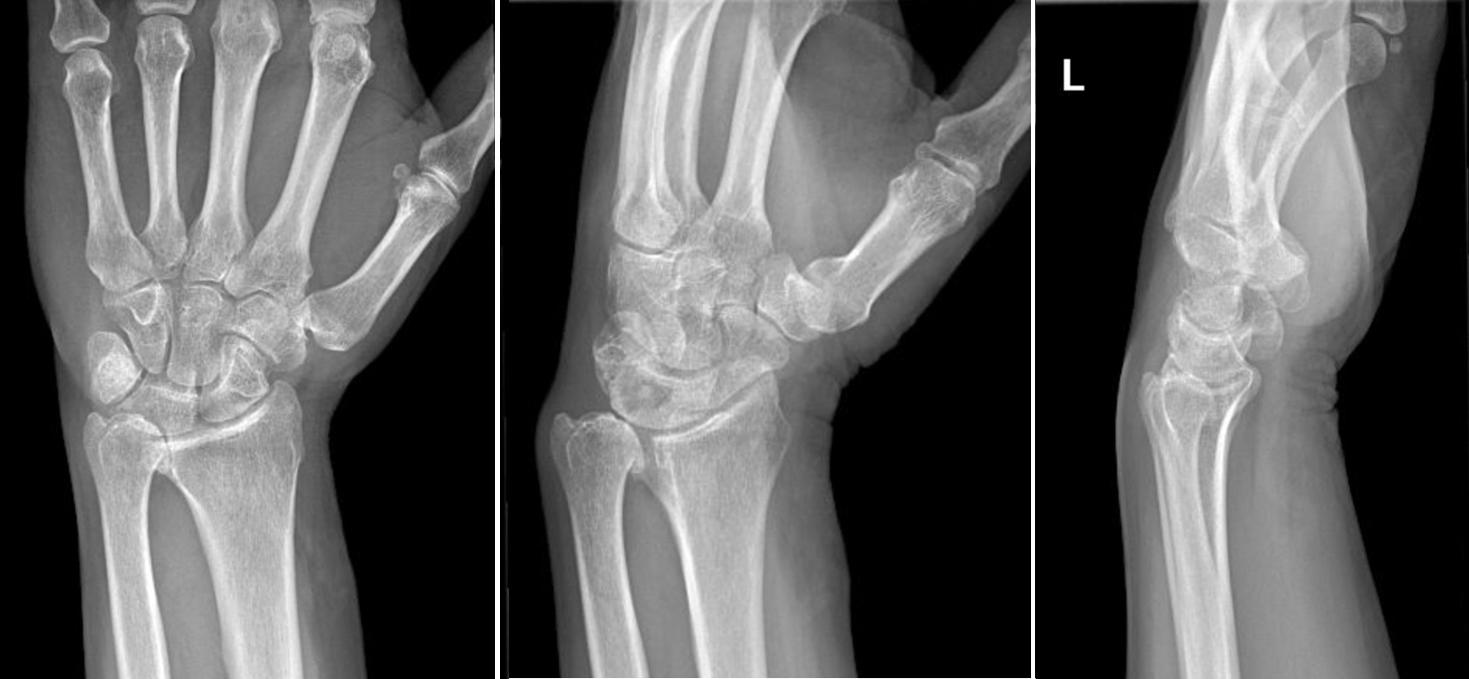Physical Address
304 North Cardinal St.
Dorchester Center, MA 02124
Matched hemiresection ulnar arthroplasty is indicated in patients with distal radioulnar joint (DRUJ) pain from posttraumatic arthritis, osteoarthritis (OA), or inflammatory arthritis with an intact triangular fibrocartilaginous complex (TFCC).
The premise of hemiresection arthroplasty is that the DRUJ articulation is eliminated, but the TFCC and ulnocarpal ligaments are maintained.
The procedure is technically simple, maintains ulnar length, preserves ulnar-sided wrist stability, and permits full pronation and supination. In addition, there is no need for prolonged immobilization postoperatively.
The procedure was introduced to avoid the complications associated with other ablative procedures (Darrach and Sauvé-Kapandji), such as ulna stump instability, impingement of the ulna and radius, and ulnar translation of the carpus.
This procedure is ideal for those with DRUJ arthritis on radiograph and DRUJ pain with pronation/supination.
TFCC pathology: There is no advantage to hemiresection arthroplasty over distal ulna resection (Darrach) if the TFCC is not intact.
In the case of ulnocarpal abutment with greater than 2 mm positive ulnar variance, mechanical abutment will persist unless a concomitant ulnar shortening is performed.
Comprehensive evaluation of the wrist is necessary to identify all sources of ulnar-sided wrist pain.
Patients may complain of pain, swelling, stiffness, or decreased grip strength. Some patients can identify the location of pain as dorsal and directly overlying the DRUJ.
The ulna compression test confirms the presence of DRUJ arthritis; the radius and ulna are compressed at the DRUJ with the elbow in 90 degrees of flexion and the forearm in neutral. Arthritis or synovitis will manifest as pain.
Crepitus and pain can be appreciated while compressing the DRUJ and passively rotating the forearm to the extremes of pronation and supination.
Stability of the TFCC must be confirmed clinically. The aim of this operation is to remove the impingement of the arthritic ulna with the sigmoid notch. In rheumatoid patients, the DRUJ is typically unstable, which is a contraindication to performing this operation. With OA, the TFCC is typically intact and stabilizes the DRUJ, which makes partial excision of the articulating ulna an ideal operation to remove the source of pain.
For additional details, see Chapter 49 Distal Ulna Resection (Darrach Procedure).
Standard three-view wrist x-rays are mandatory ( Fig. 51.1 ). Careful attention is paid to the articular surfaces of the sigmoid notch and the ulna head. Narrowing of the DRUJ and ulna head osteophyte formation are common. Osteophyte formation typically begins at the proximal aspect of the ulna head; the sigmoid notch is spared early in the disease process.

Bilateral wrist x-rays are sometimes helpful to compare ulnar variance and to determine whether malunion or carpal malalignment exists in the setting of prior trauma.
Computed tomography (CT) scan aids in diagnosing incongruity of the sigmoid notch in the setting of prior trauma or if the diagnosis is unclear.
Become a Clinical Tree membership for Full access and enjoy Unlimited articles
If you are a member. Log in here